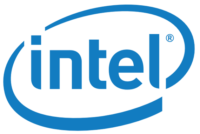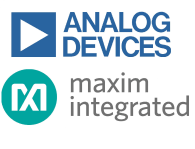Edge computing enables a wide variety of use cases
Edge computing has seen a rapid increase in use cases. Businesses are increasingly recognizing its potential to enhance performance and reduce costs.
As such, Edge computing enables a growing number of applications across a wide range of industries, including autonomous vehicles, smart cities, healthcare, and more.
This article explores some of the most notable Edge computing use cases and examines how businesses implement this cutting-edge technology.
Edge computing: The key benefits you need to know
To fully appreciate the potential of Edge computing in specific use cases, it’s important to understand its underlying benefits.
Discovering the advantages of Edge computing allows insight into how this technology is effectively leveraged in various scenarios. Therefore, let’s explore the benefits of Edge computing in more detail before diving into its use cases.
Edge computing lowers latency
Edge computing is a powerful technology that offers numerous benefits, including its ability to reduce latency.
By processing data at or near the network’s edge, Edge computing can help avoid long-distance communication delays, enabling real-time data processing.
This feature makes it an excellent choice for industries that demand prompt data insights, such as those relying on IoT devices, autonomous vehicles, and virtual reality (VR).
Edge computing offers significant cost savings
Edge computing provides cost advantages in several ways.
For example, by processing data closer to the source, Edge computing can help reduce bandwidth costs. This is because less data needs to be transmitted to the cloud for processing, resulting in lower network traffic and data transfer costs.
Edge computing also reduces storage costs by storing only relevant data locally instead of sending all data to the cloud.
Additionally, by processing data at or near the edge of the network, businesses can achieve more efficient data processing and analysis, resulting in cost-saving, lightning-fast insights and decision-making capabilities.
Edge computing provides secure data storage and processing
Edge computing can also provide a more secure way to store and process data.
Keeping the data at or near its source reduces the risk of hackers intercepting it mid-transit.
Since there is less distance for the data to travel, it is less vulnerable to attacks and interference.
Edge computing increases scalability
Because Edge computing runs at or near the data source, it can be easily scaled up or down depending on a company’s needs.
This makes it an ideal solution for businesses that need to quickly and efficiently scale their applications as their customer base grows.
The scalability of Edge computing is made possible by the technology’s distributed nature.
Rather than relying on a centralized data center, Edge computing distributes the computing workload across a network of devices and systems, allowing for greater flexibility and adaptability.
For example, a business can add additional Edge computing resources during high demand, then remove them to reduce costs when demand decreases.
The top 7 use cases of Edge computing
With its ability to process data at the network’s edge, Edge computing has become a key enabler for a wide range of use cases across different industries.
This section explores seven Edge computing use cases, ranging from smart home automation to retail. These use cases showcase how Edge computing can be applied to solve real-world problems and unlock new opportunities.
1. Edge computing supports smart home automation
Smart home devices, such as connected thermostats, Smart Video Doorbells, lighting systems, and security cameras, generate a vast amount of data that needs to be processed and analyzed in real-time to enable remote monitoring and control from a smartphone or tablet.
Edge computing brings processing and analytics capabilities closer to these devices, allowing them to process data locally rather than sending it to the cloud for analysis.
This helps reduce latency, increase reliability, save on costs, and improve the overall performance of smart home systems.
For instance, a smart thermostat equipped with Edge computing technology can learn about a user’s daily routine and adjust the temperature settings accordingly. In this instance, the Edge-enabled device (the thermostat) doesn’t have to rely on cloud servers to make decisions, reducing response times and making the user experience more seamless.
Overall, Edge computing is critical in making smart home systems more autonomous and efficient, giving homeowners greater control over their living spaces while improving their quality of life.
2. Edge computing enhances autonomous vehicle technology
Autonomous vehicles rely heavily on data processing and analytics to make decisions in real-time, such as detecting obstacles and reacting to changing conditions on the road.
Edge computing brings processing and analytics capabilities closer to the vehicles, allowing them to process data locally. This helps to reduce latency and increase reliability.
Moreover, Edge computing can enable machine learning (ML) and Edge artificial intelligence (Edge AI) in autonomous vehicles, making them smarter and more capable of handling complex driving scenarios.
3. Edge computing boosts industrial IoT applications
Industrial Internet of Things (IIoT) devices such as robots, industrial sensors, and machines can benefit tremendously from Edge computing.
By running analytics and algorithms at the Edge, businesses can gain better insights into operations. This could include tracking inventory levels, monitoring production line efficiency, or detecting faults in machinery.
Edge computing also boosts IIoT applications by helping businesses improve operational efficiency, reduce costs, and enhance productivity.
4. Edge computing powers augmented reality (AR) and virtual reality (VR)
AR and VR applications require real-time data processing to deliver seamless, immersive user experiences.
This can be challenging for traditional cloud computing systems due to latency issues. However, Edge computing can perform data processing on the device or a nearby server, reducing lag and improving overall performance.
For example, Edge computing can process audio, video, and input signals in VR gaming scenarios in real-time, creating a smooth, immersive experience for the user.
5. Edge computing helps run smart cities
In the context of smart cities, Edge computing allows data to be processed and analyzed on various devices and sensors that make up the smart city’s ecosystem.
This localized processing can lead to faster response times, better decision-making, and lower costs.
For example, in a smart traffic management system, Edge computing can process data from sensors and cameras on the road in real-time. This data can be used to identify congestion or accidents and make real-time adjustments to traffic flow, such as changing traffic light patterns or redirecting traffic.
By processing this data at the Edge, the system can respond more quickly and efficiently to changes in traffic patterns.
Similarly, in a waste management system, sensors can monitor trash levels in public trash cans.
Edge computing can process this data and alert waste management workers when a trash can is full. This reduces costs by allowing workers to only empty trash cans when full, rather than on a fixed schedule.
6. Edge computing supports improved healthcare technology
Edge computing can improve healthcare services, such as remote patient monitoring and telemedicine.
Healthcare providers can gain better insights into their patient’s conditions by running analytics at the edge. This could lead to more accurate diagnoses, faster response times, and improved patient outcomes.
Additionally, Edge computing can be particularly valuable for healthcare providers that must comply with strict regulatory requirements, such as the Health Insurance Portability and Accountability Act (HIPAA).
HIPAA mandates that patient data be kept confidential and secure. Edge computing provides a solution to address these requirements by allowing healthcare providers to process and analyze data locally rather than transmitting it to centralized servers or the cloud.
7. Edge computing optimizes retail
Retail stores increasingly rely on connected devices like beacons and sensors to track customer behavior and provide a more personalized experience.
Edge computing can help optimize this process by allowing the data to be processed at the source, leading to faster response times, better customer engagement, and improved sales.
One example of how Edge computing can benefit retail is through the use of automatic license plate recognition (ALPR) for ‘click and collect’ or store pick-up services.
ALPR technology can quickly and accurately identify customers as they arrive for their orders, allowing retailers to prepare their purchases in advance and reduce wait times.
By processing the ALPR data at the Edge, retailers can reduce the amount of data transmitted to central servers or the cloud, leading to faster operations and happier customers.
The future of Edge computing and its many use cases
Edge computing is a rapidly evolving technology with many potential use cases across multiple industries.
As the technology develops, businesses can increasingly leverage its benefits, such as improved insights, faster response times, enhanced customer engagement, and cost-effectiveness.
With the growing prevalence of connected devices, Edge computing is expected to play an even more significant role in the future of data processing.
The next stage of Edge computing will involve the development of more complex applications in areas such as artificial intelligence, machine learning, and robotics, which will provide exciting new opportunities for a diverse array of businesses.












